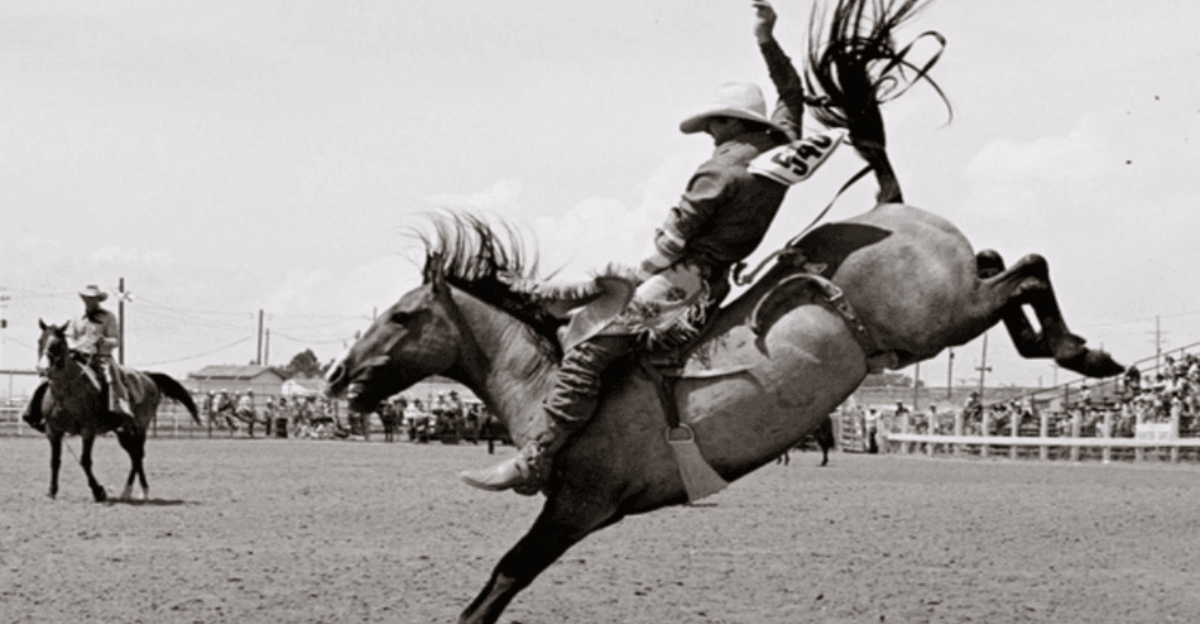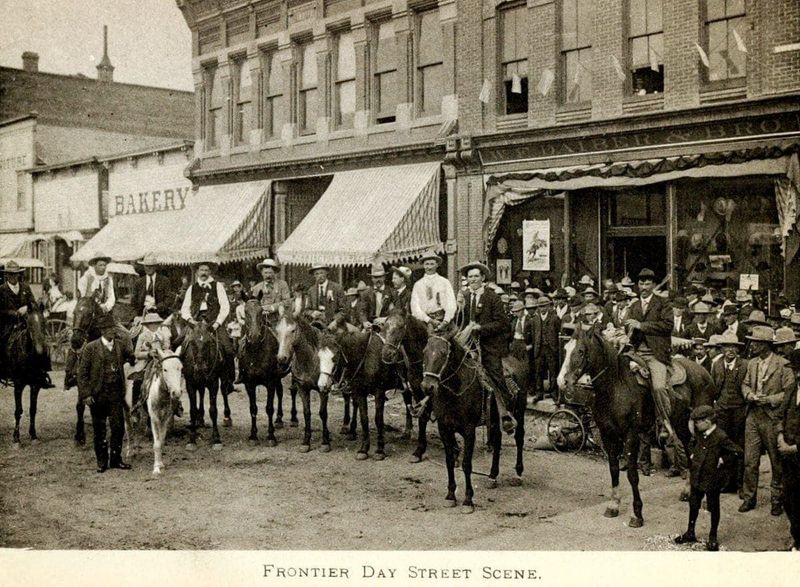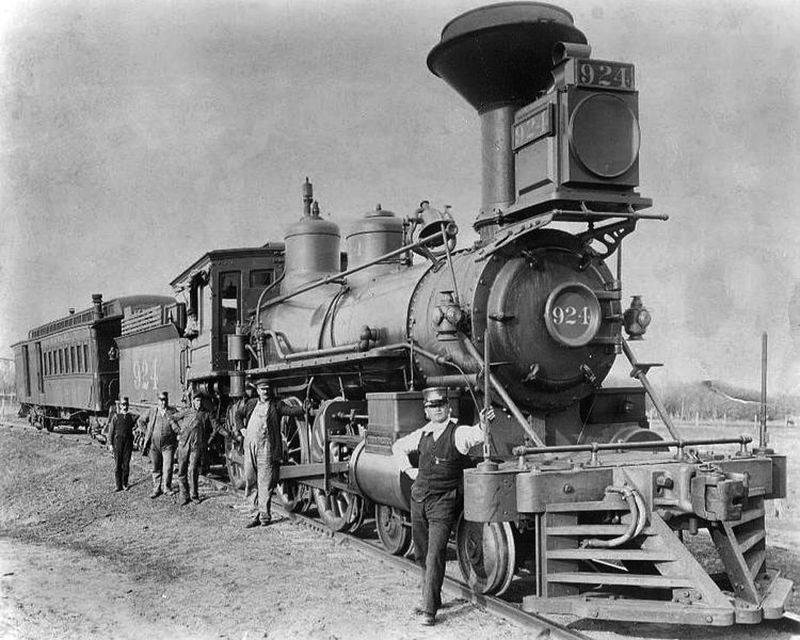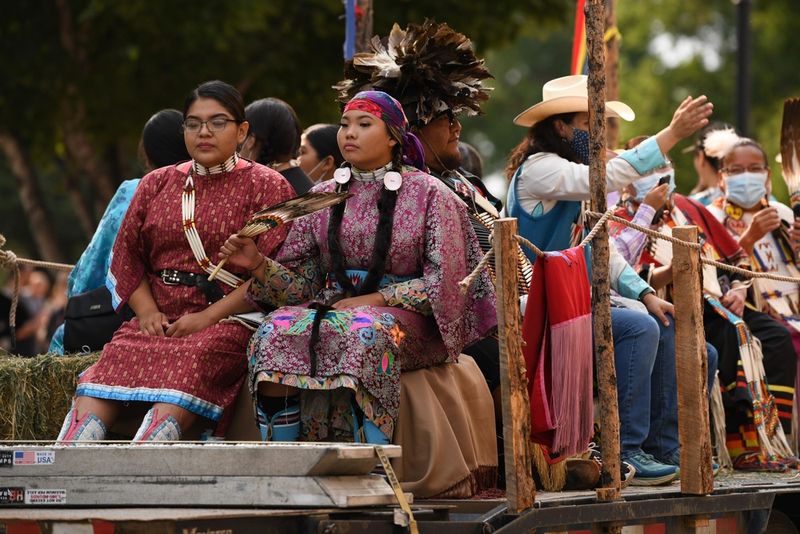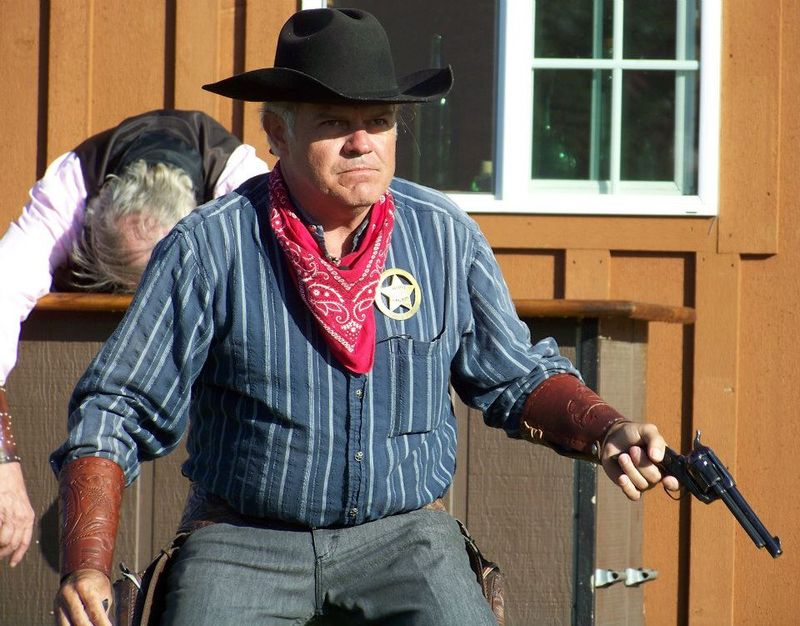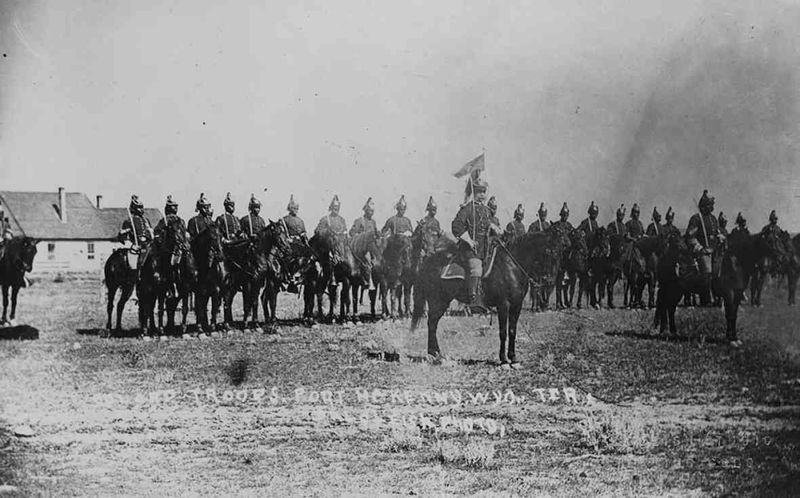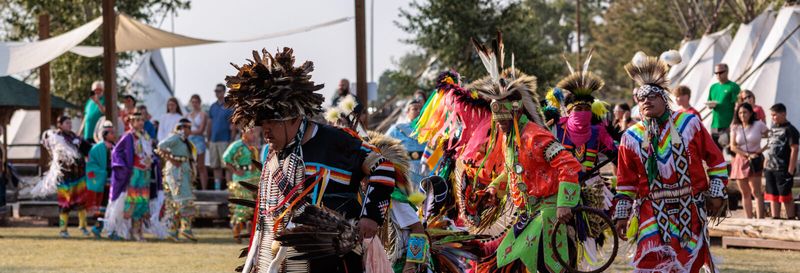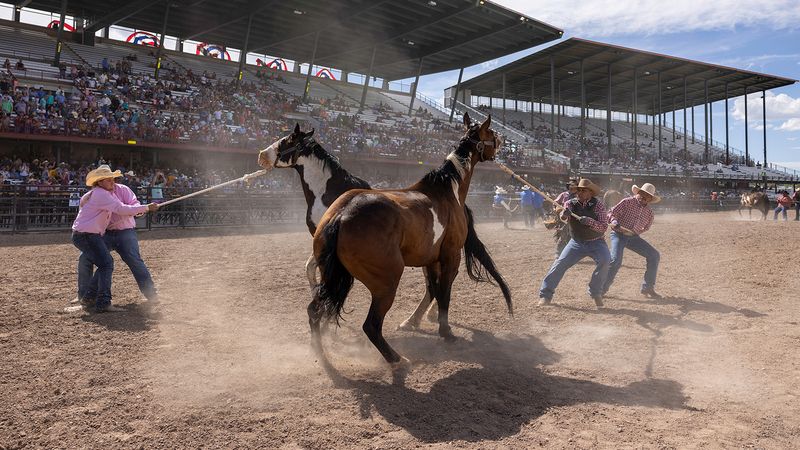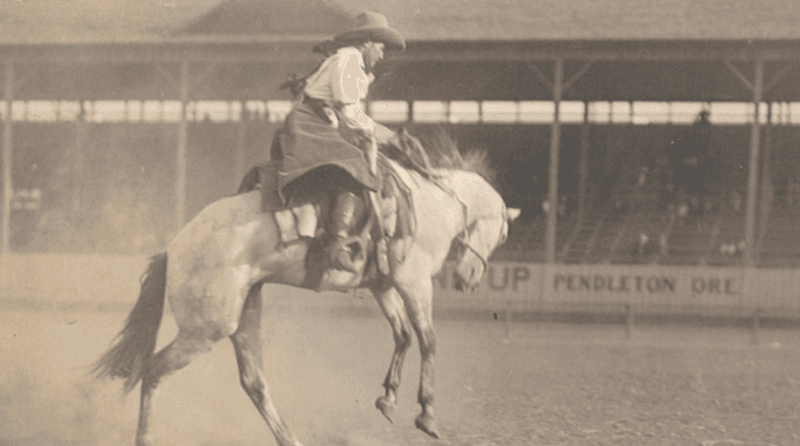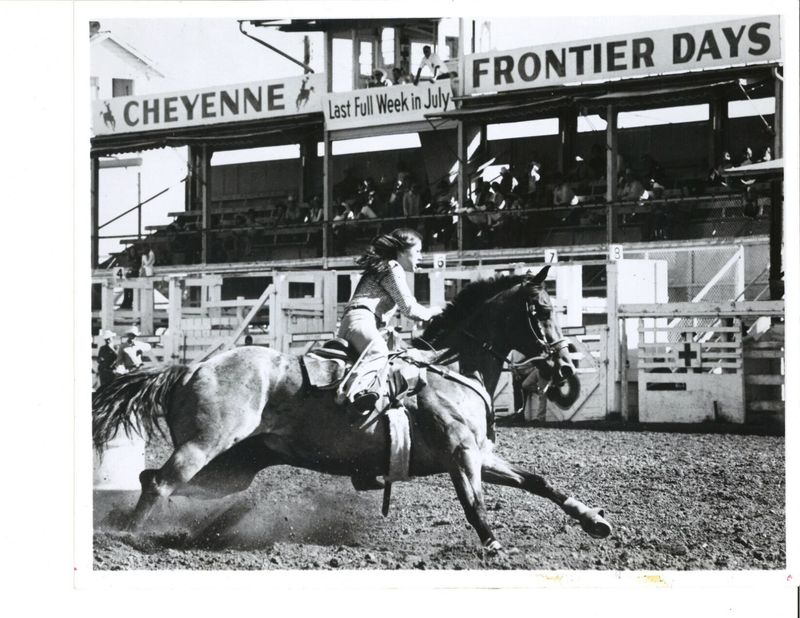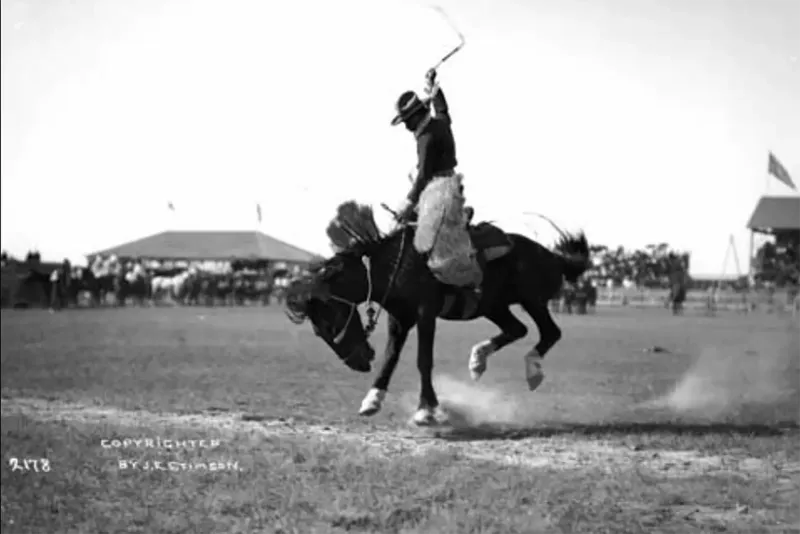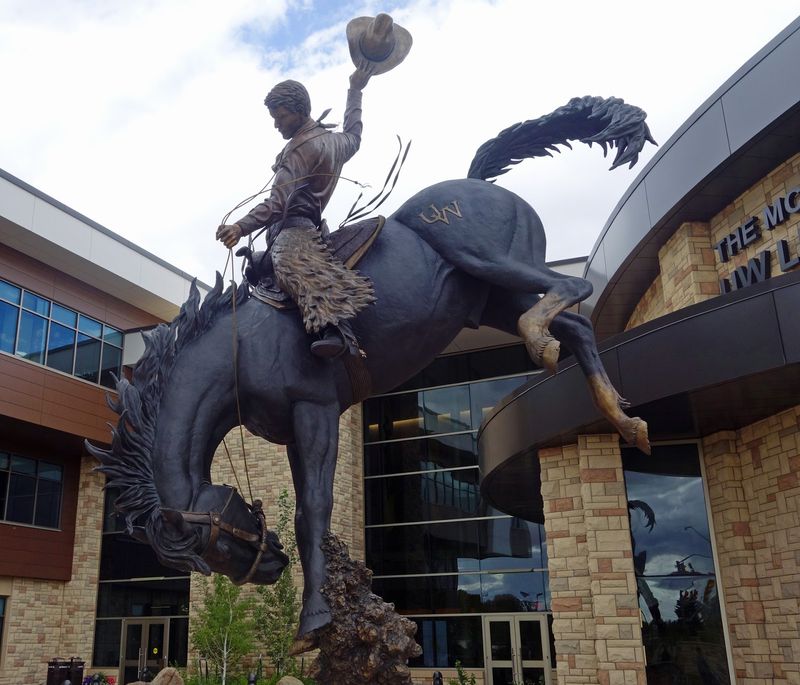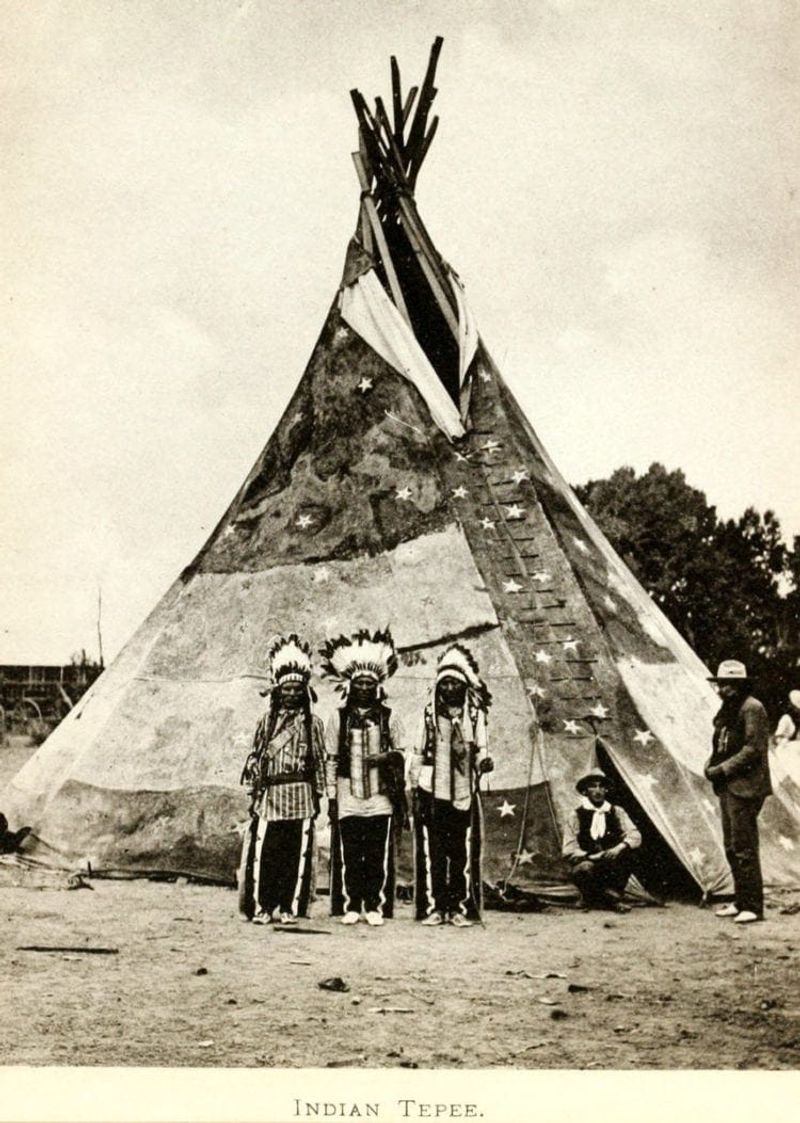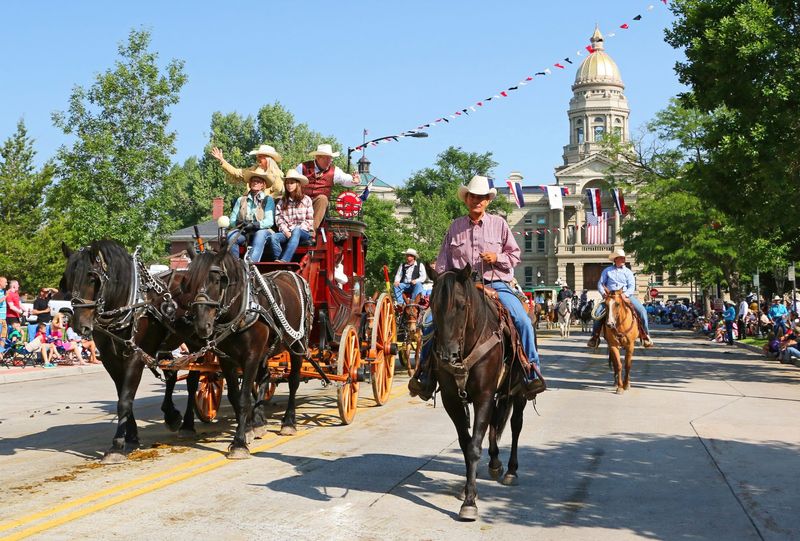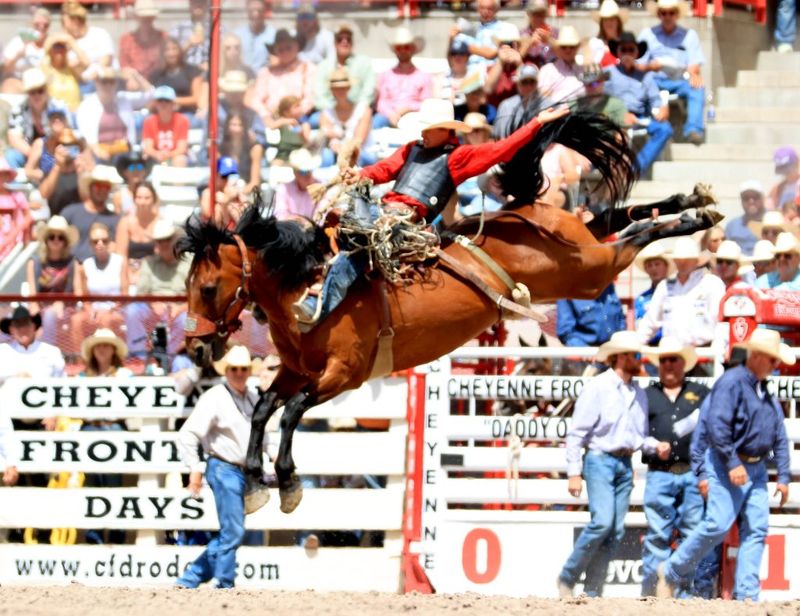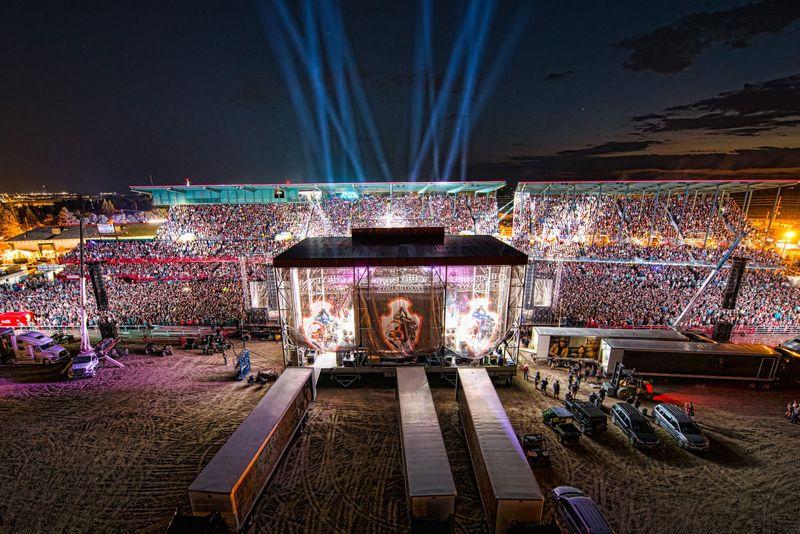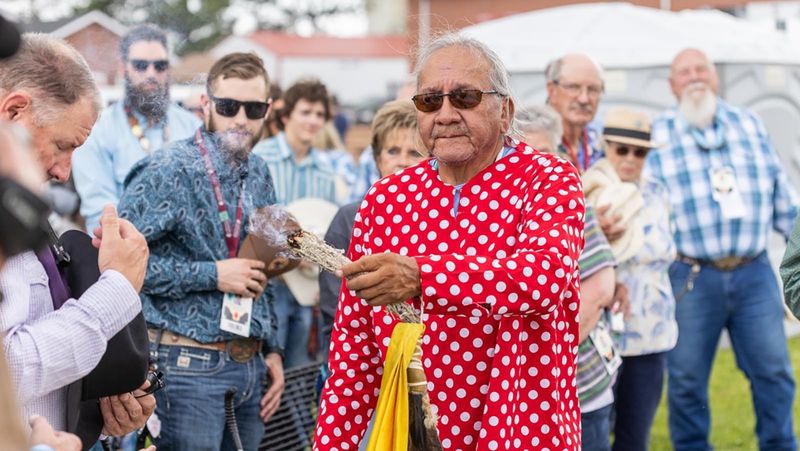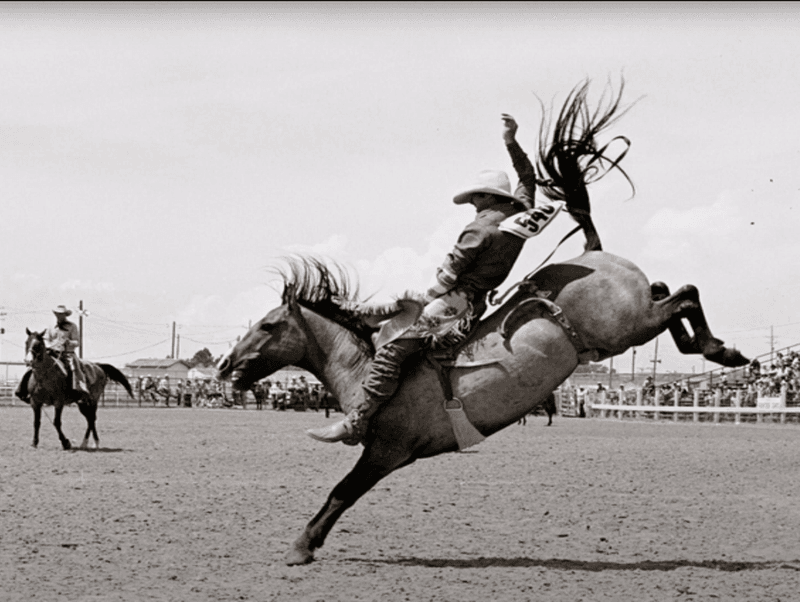Cheyenne Frontier Days, inaugurated in 1897, quickly earned its moniker as the “Daddy of ’em All,” becoming a cornerstone of Western heritage. Between 1897 and 1902, this annual celebration in Cheyenne, Wyoming, showcased the rugged spirit of the American West through thrilling rodeo events, cultural exhibitions, and community festivities. Let’s journey back to those formative years and uncover 17 remarkable moments that etched Cheyenne Frontier Days into the annals of history.
1. The Inaugural Frontier Day (1897)
On September 23, 1897, Cheyenne hosted its first Frontier Day, a one-day event featuring bronco busting, steer roping, and pony races. Set against the backdrop of the rugged Wyoming landscape, it was conceived to boost the local economy and celebrate Western culture. The event laid the foundation for what would become the world’s largest outdoor rodeo. Cowboys and spectators filled the air with excitement, as the day’s activities offered a rich blend of competition and camaraderie. This debut was a resounding success, marking the beginning of a cherished tradition that endures to this day.
2. Railroads Fuel Attendance
The Union Pacific Railroad played a pivotal role in the early success of Cheyenne Frontier Days. By offering special excursion rates, it attracted visitors from distant cities, transforming Cheyenne into a bustling hub during the festivities. Trains filled with eager attendees rolled into town, bringing with them an air of excitement and anticipation. This influx of visitors not only boosted the local economy but also established the event as a significant attraction. The railroad’s involvement was instrumental in shaping the identity and reach of Frontier Days, making it accessible to a broader audience.
3. Introduction of the Grand Parade (1898)
In 1898, the spectacle of Cheyenne Frontier Days expanded with the introduction of a grand parade. This lively procession featured cowboys, Native American performers, and elaborate floats, captivating spectators and adding a new dimension to the celebration. The parade became a symbol of unity and cultural exchange, showcasing the diverse heritage of the American West. As it wound through the streets of Cheyenne, the parade left a lasting impression on attendees, setting a precedent for future festivities. Its success underscored the importance of pageantry and community involvement in the event’s enduring appeal.
4. Authentic Wild West Reenactments
Cheyenne Frontier Days thrilled audiences with authentic Wild West reenactments, offering realistic portrayals of stagecoach holdups and frontier justice. Cowboys, dressed in period attire, staged dramatic scenes that included mock hangings and daring rescues, providing attendees with an immersive glimpse into the lawless days of the Old West. These reenactments were more than mere entertainment; they were a vivid celebration of Western folklore and history. Each performance captured the imagination of the crowd, furthering the mystique of the Wild West. This unique attraction remains a beloved aspect of the event’s rich legacy.
5. Military Participation Enhances Spectacle
Colonel Van Horn of Fort Russell added a military flair to Cheyenne Frontier Days by organizing sham battles involving the Eighth Infantry Regiment. These staged military exercises captivated audiences, drawing larger crowds and enhancing the overall spectacle of the event. Soldiers, clad in period-appropriate uniforms, performed drills and mock skirmishes, demonstrating both precision and pageantry. This participation by the military not only diversified the range of activities but also highlighted the close ties between the armed forces and the local community. It was a proud display of discipline and tradition that enriched the festival experience.
6. Native American Cultural Exhibits
Starting in 1898, Native American tribes were invited to participate in Cheyenne Frontier Days, setting up an “Indian Village” where they showcased their rich cultural heritage. This vibrant exhibit featured traditional dances, crafts, and customs, offering attendees a unique glimpse into the diverse traditions of the tribes. The “Indian Village” became a centerpiece of cultural exchange, fostering understanding and appreciation among the event’s diverse audience. These exhibits not only enriched the tapestry of Frontier Days but also provided Indigenous peoples with a platform to share their stories and traditions with a wider public.
7. Wild Horse Races Thrill Spectators
The wild horse races at Cheyenne Frontier Days epitomized the untamed spirit of the American West. In these thrilling contests, untamed horses were released into the arena, and cowboys raced to capture and ride them. The dust flew, and the air was filled with the roar of the crowd as competitors showcased their skills and bravery. These races quickly became a highlight of the event, offering an adrenaline-pumping experience for both participants and spectators. The wild horse races were a powerful reminder of the rugged, adventurous spirit that defined the Western frontier.
8. Cowgirls Make Their Mark
Women made a significant impact at Cheyenne Frontier Days by participating in various events, including bronco riding and races. These cowgirls defied societal expectations, demonstrating their equestrian prowess to enthusiastic audiences. Their participation not only challenged gender norms but also carved out a space for women in the male-dominated world of rodeo. Each ride and race was a statement of empowerment and skill, as the cowgirls captivated the crowd with their daring feats. Their accomplishments paved the way for future generations of women in rodeo, leaving an indelible mark on the history of the event.
9. Economic Impact Evident Early On
By 1900, the economic impact of Cheyenne Frontier Days was undeniable. The festival attracted thousands of visitors, transforming the town into a bustling center of commerce and activity. Local businesses thrived as the influx of attendees filled hotels, restaurants, and shops. The event became a significant driver of economic growth, providing a boost to the local economy during each celebration. This prosperity underscored the importance of Frontier Days as more than just an entertainment spectacle; it was a vital part of the community’s financial sustainability and growth, ensuring its continued success and expansion.
10. Steamboat: The Legendary Bucking Horse
In 1901, a bucking horse named Steamboat gained notoriety at Cheyenne Frontier Days for his unmatched spirit and power. Known for his fierce and untamed bucking style, Steamboat became a symbol of the rodeo, captivating audiences with his wild performances. His legacy extended beyond the arena, as he later inspired the design of Wyoming’s state license plate, cementing his place in history. Steamboat’s legendary status made him a cherished figure in the lore of Frontier Days, embodying the rugged, untamed nature of the Wild West and the enduring spirit of the festival.
11. Clayton Danks’ Rodeo Triumphs
Clayton Danks emerged as a rodeo star at Cheyenne Frontier Days, winning multiple events in the early 1900s. His prowess in the arena made him a standout figure, earning him admiration and accolades from spectators and fellow competitors alike. Danks’ achievements went beyond mere victories; he became the model for Wyoming’s Bucking Horse and Rider emblem, a lasting tribute to his contribution to the sport. His triumphs at Frontier Days highlighted the skill and determination required to excel in rodeo, inspiring future generations of cowboys and rodeo enthusiasts to follow in his footsteps.
12. Photographic Documentation Preserves Legacy
Photographers like J.E. Stimson played a crucial role in preserving the legacy of Cheyenne Frontier Days. Through their lenses, they captured iconic images of the event’s early years, providing invaluable visual records of its participants and atmosphere. These photographs offered a window into the past, allowing future generations to appreciate the rich history and cultural significance of Frontier Days. Stimson’s work, in particular, became a cherished part of the event’s heritage, ensuring that the spirit and vibrancy of those early celebrations would not be forgotten. His photographs remain a testament to the enduring allure of the Wild West.
13. Community Involvement Spurs Growth
The success of Cheyenne Frontier Days has always been deeply rooted in the involvement of the local community. Volunteers and organizations played critical roles in organizing and expanding the event, fostering a sense of pride and ownership among Cheyenne’s residents. Their dedication and enthusiasm were instrumental in the festival’s growth, as community members worked tirelessly to ensure its success. This collaborative spirit not only strengthened the bonds within the community but also contributed to the inclusive and welcoming atmosphere of Frontier Days. The commitment of Cheyenne’s citizens remains a cornerstone of the festival’s enduring legacy.
14. Introduction of Prize Money
The introduction of cash prizes at Cheyenne Frontier Days marked a significant shift in the competitive landscape of the event. Offering monetary rewards for rodeo events attracted top talent from across the country, elevating the level of competition and prestige of Frontier Days. Cowboys and cowgirls competed with renewed vigor, knowing that victory brought not only honor but tangible rewards. This innovation helped solidify the festival’s reputation as a premier rodeo destination, drawing skilled participants and enthusiastic spectators alike. The promise of prize money added a new layer of excitement and intensity to the already thrilling rodeo contests.
15. Expansion to Multi-Day Event
Due to its growing popularity, Cheyenne Frontier Days expanded beyond its original one-day format, eventually evolving into a multi-day festival. This transformation allowed for a greater variety of activities and attractions, catering to a wider range of interests and audiences. Attendees could now experience an array of events, from thrilling rodeo competitions to cultural exhibitions and community festivities. The multi-day format provided more opportunities for engagement and enjoyment, enhancing the overall experience for visitors. This expansion marked a new chapter in the festival’s history, solidifying its status as a dynamic and inclusive celebration of Western heritage.
16. Cultural Exchange and Education
Cheyenne Frontier Days has long been a platform for cultural exchange and education. The inclusion of diverse cultural exhibits and performances allowed attendees to learn about different traditions and histories of the American West. From Native American dances to cowboy demonstrations, these activities provided a rich tapestry of cultural understanding. Visitors were not only entertained but also educated, gaining insights into the multifaceted heritage of the region. This commitment to cultural exchange fostered a sense of connection and appreciation among attendees, enriching the festival experience and ensuring that the legacy of the Wild West continued to inspire and educate.
17. Foundation for Future Traditions
The early years of Cheyenne Frontier Days laid the foundation for enduring traditions that continue to shape the event today. From the inaugural rodeo competitions to the introduction of cultural exhibits, these formative moments set the stage for the festival’s evolution into a premier celebration of Western heritage. The vibrant atmosphere and community involvement established during these years have become hallmarks of the event, ensuring its continued success and relevance. As Cheyenne Frontier Days moves forward, it remains rooted in the traditions and values that were forged in its early history, serving as a timeless tribute to the spirit of the American West.
